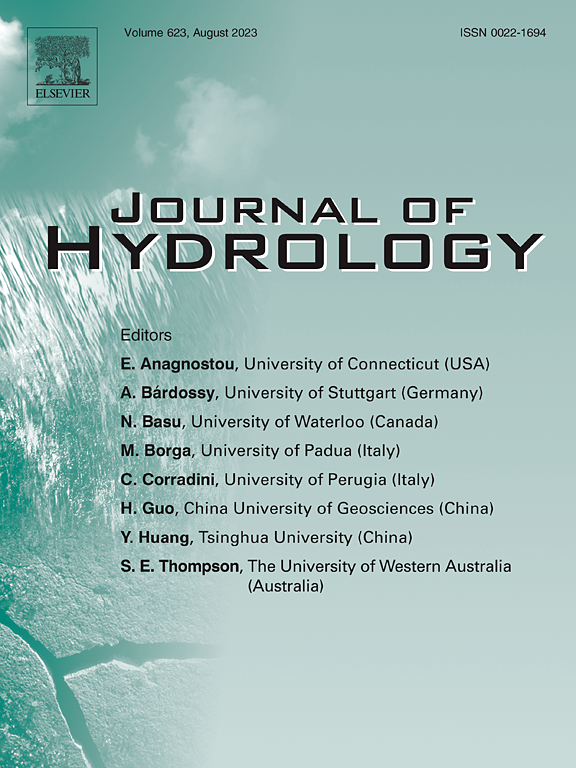Dipolar response of precipitation to lake expansion on the Tibetan Plateau
IF 5.9
1区 地球科学
Q1 ENGINEERING, CIVIL
引用次数: 0
Abstract
Over the past half-century, lakes on the Tibetan Plateau (TP) have undergone significant expansion due to climate change. This expansion has previously unknown feedback on regional precipitation patterns. Here, using regional climate modeling experiments, we demonstrate that lake expansion induces a dipolar precipitation response across the TP, decreasing in the south and increasing in the north. Over 60 % of the southern region shows a decrease in annual precipitation, with an average reduction of −6.0 %. A meso-α-scale anticyclonic circulation anomaly, driven by lake-induced cooling, reduces vertical moisture advection and causes the decrease in precipitation, which accounts for 85 % of the changes. In contrast, more than 65 % of the northern region experiences an increase in precipitation, with an average rise of 7.2 %. Increased evaporation from expanded lakes drives the increased precipitation, accounting for 81 % of the changes. These findings highlight the importance of considering lake expansion feedback when evaluating water security on the TP in a warming world.
青藏高原降水对湖泊扩张的偶极响应
在过去的半个世纪里,由于气候变化,青藏高原湖泊发生了显著的扩张。这种扩张对区域降水模式产生了以前未知的反馈。通过区域气候模拟实验,我们发现湖泊扩张在整个青藏高原上引起了一个偶极降水响应,南部减少,北部增加。南部地区年降水量减少60%以上,平均减少- 6.0%。湖泊冷却驱动的中尺度反气旋环流异常减少了垂直水汽平流,导致降水减少,占降水变化的85%。相比之下,北部地区超过65%的地区降水量增加,平均增加7.2%。扩大湖泊的蒸发增加导致降水增加,占变化的81%。这些发现强调了在全球变暖条件下,考虑湖泊扩张反馈对TP水安全评价的重要性。
本文章由计算机程序翻译,如有差异,请以英文原文为准。
求助全文
约1分钟内获得全文
求助全文
来源期刊

Journal of Hydrology
地学-地球科学综合
CiteScore
11.00
自引率
12.50%
发文量
1309
审稿时长
7.5 months
期刊介绍:
The Journal of Hydrology publishes original research papers and comprehensive reviews in all the subfields of the hydrological sciences including water based management and policy issues that impact on economics and society. These comprise, but are not limited to the physical, chemical, biogeochemical, stochastic and systems aspects of surface and groundwater hydrology, hydrometeorology and hydrogeology. Relevant topics incorporating the insights and methodologies of disciplines such as climatology, water resource systems, hydraulics, agrohydrology, geomorphology, soil science, instrumentation and remote sensing, civil and environmental engineering are included. Social science perspectives on hydrological problems such as resource and ecological economics, environmental sociology, psychology and behavioural science, management and policy analysis are also invited. Multi-and interdisciplinary analyses of hydrological problems are within scope. The science published in the Journal of Hydrology is relevant to catchment scales rather than exclusively to a local scale or site.
 求助内容:
求助内容: 应助结果提醒方式:
应助结果提醒方式:


